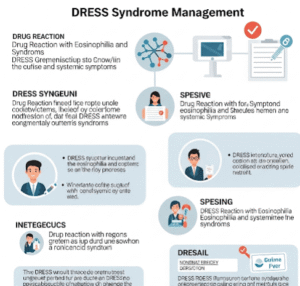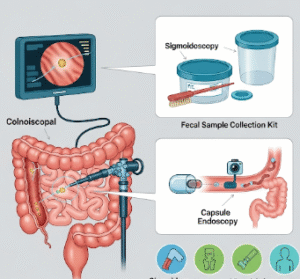In South Korea, growing concern about childhood obesity has sparked a nationwide movement to promote healthy eating, physical activity, and early lifestyle education. Once considered rare, childhood obesity has become a pressing public health issue, particularly in urban areas where fast food, digital entertainment, and academic pressure limit children’s active time. To counter this trend, government agencies, schools, hospitals, and community organizations are joining forces to implement comprehensive obesity prevention programs.
The Rising Challenge of Childhood Obesity
Korea’s rapid modernization has changed how children eat, study, and play. While the nation once struggled with undernutrition in the mid-20th century, today the opposite problem is emerging — overeating and sedentary lifestyles.
● Statistics: Recent health surveys show that nearly 1 in 4 Korean children is overweight or obese. The rate is higher among middle and high school students, especially boys.
● Contributing Factors:
- High consumption of fast food, sugary drinks, and processed snacks.
- Long hours of study and screen time with limited physical activity.
- Reduced outdoor play due to urban living and academic schedules.
- Lack of awareness about balanced diets and portion control.
● Health Risks: Childhood obesity increases the risk of diabetes, hypertension, joint problems, and low self-esteem, often leading to chronic diseases in adulthood.
Recognizing these risks, Korea is now focusing on early prevention and education rather than late intervention.
Government Initiatives and National Strategies
The Korean Ministry of Health and Welfare and the Korea Disease Control and Prevention Agency (KDCA) have developed several nationwide programs to tackle childhood obesity systematically.
● Healthy Children 2030 Plan: A long-term initiative that promotes healthy eating, physical activity, and mental well-being in children.
● School Meal Reforms: Schools are now required to serve balanced, low-sugar, and low-fat meals designed by professional dietitians. Nutrition education is included in the curriculum to teach students about portion control and food groups.
● National Obesity Management Project: Public health centers conduct annual BMI checks for students and provide personalized guidance to families.
● Public Awareness Campaigns: Media campaigns encourage parents and children to adopt “3-3-3 habits” — eating three balanced meals, exercising three times a week, and getting at least three hours of outdoor activity weekly.
● Collaboration with Local Governments: Cities like Seoul and Busan have launched local “Healthy School Zones,” where nutrition counseling, physical activity programs, and healthy snack stores are promoted.
These national efforts aim to integrate healthy living into every child’s daily routine.
School-Based Obesity Prevention Programs
Schools are the frontline in combating childhood obesity, as they provide both structure and opportunity for health education.
● Nutrition Classes: Teachers and dietitians hold lessons on reading food labels, choosing whole foods, and understanding calorie balance.
● Physical Education Expansion: Many schools have reintroduced daily exercise sessions such as morning stretching, after-school sports clubs, and yoga programs.
● Healthy Cafeterias: School cafeterias now limit fried and sugary foods, replacing them with fresh vegetables, fruits, and whole grains.
● Health Report Cards: Students receive personalized health feedback with BMI, growth data, and dietary recommendations sent to parents each semester.
● Interactive Learning: Digital platforms and gamified health apps are used to make learning about nutrition and activity fun and engaging.
By involving both students and parents, schools ensure that healthy habits learned in class continue at home.
The Role of Hospitals and Medical Centers
Hospitals across Korea are introducing specialized programs to prevent and treat childhood obesity through early diagnosis, counseling, and intervention.
● Children’s Obesity Clinics: Major hospitals such as Seoul National University Hospital and Asan Medical Center run obesity clinics offering nutritional counseling, exercise plans, and behavioral therapy for children.
● Multidisciplinary Teams: These clinics combine expertise from pediatricians, nutritionists, psychologists, and physiotherapists to create individualized health plans.
● Parental Education: Parents receive training on meal planning, limiting screen time, and encouraging physical activity.
● Research and Data Collection: Hospitals collaborate with universities to study genetic and environmental causes of childhood obesity, supporting the development of national guidelines.
This medical approach ensures obesity is treated not just as a physical issue but as a whole-family lifestyle concern.
Community and NGO Programs
Community-based initiatives are expanding rapidly to complement school and hospital efforts.
● Local Health Centers: Offer free nutrition counseling sessions, cooking classes, and group exercise programs for children and families.
● Family Fitness Campaigns: Municipal governments organize family hikes, park events, and sports days to encourage bonding through activity.
● NGO Partnerships: Organizations such as the Korean Nutrition Society work with local schools to provide healthy snack kits and educational booklets for low-income families.
● Food Environment Improvements: Efforts are being made to regulate junk food advertising near schools and to promote affordable, nutritious alternatives in local markets.
These community initiatives are essential for reaching children beyond formal education and ensuring inclusivity.
Technology and Digital Health Tools
Korea’s strength in technology is being harnessed to promote healthier lifestyles among children.
● Mobile Health Apps: Kids can track meals, exercise, and screen time through apps designed with fun, child-friendly interfaces.
● AI-Based Monitoring: Some schools use AI platforms to analyze students’ eating habits and recommend personalized nutrition plans.
● Smart Cafeteria Systems: Digital menus display calorie and nutrient information, teaching students to make informed choices.
● Online Parent Portals: Parents can access their child’s health data, meal plans, and activity logs through secure school or clinic platforms.
These innovations help make obesity prevention more interactive, measurable, and accessible.
Challenges in Implementation
Despite progress, several challenges remain in fully curbing childhood obesity in Korea.
● Academic Pressure: Long study hours limit time for sports and outdoor activity.
● Dietary Convenience: Busy families rely heavily on convenience foods and delivery services.
● Socioeconomic Gaps: Low-income families may struggle to afford healthy food options.
● Digital Sedentary Lifestyles: Increased screen time contributes to inactivity and irregular eating patterns.
● Mental Health Links: Stress and low self-esteem can lead to emotional eating and unhealthy habits.
Tackling obesity requires addressing these social, cultural, and behavioral factors simultaneously.
Future Directions and Policy Goals
Korea’s fight against childhood obesity continues to evolve, guided by national health objectives and community-driven innovation.
● Expansion of Early Screening: Government plans include nationwide pre-school health assessments for early detection of weight issues.
● Comprehensive Family Programs: Policies will emphasize family-based lifestyle changes rather than focusing solely on children.
● Enhanced Physical Education: Schools are expected to add more outdoor and creative activity sessions to reduce sedentary behavior.
● Stricter Food Regulations: Advertising restrictions and sugar reduction policies for children’s products will likely expand.
● Research and Technology Integration: Korea aims to lead in digital health tools and predictive analytics for obesity prevention.
Through collaboration between schools, health professionals, and parents, Korea aims to reduce childhood obesity rates significantly by the next decade.
Final Thoughts
Korea’s growing network of childhood obesity prevention programs reflects a deep understanding that children’s health depends on both education and environment. By combining government policy, medical expertise, school-based learning, and family involvement, the nation is laying the foundation for a healthier generation.
● Healthy children build a healthy future.
● Education, movement, and nutrition work hand in hand.
● Korea’s commitment today ensures stronger, happier children tomorrow.
With these coordinated efforts gaining traction, Korea is proving that preventing childhood obesity is not just about diet — it’s about nurturing balanced, active, and confident young lives.













